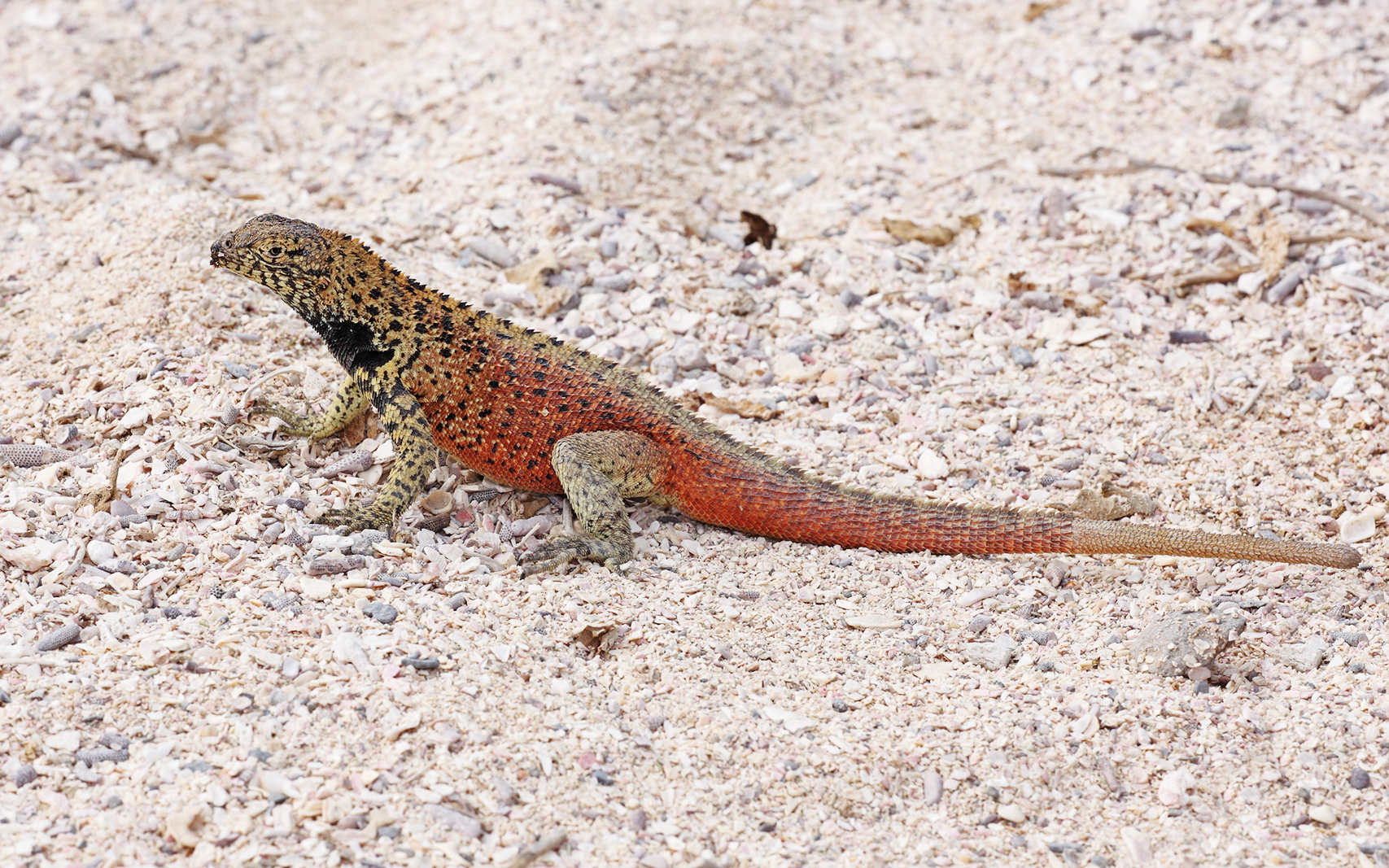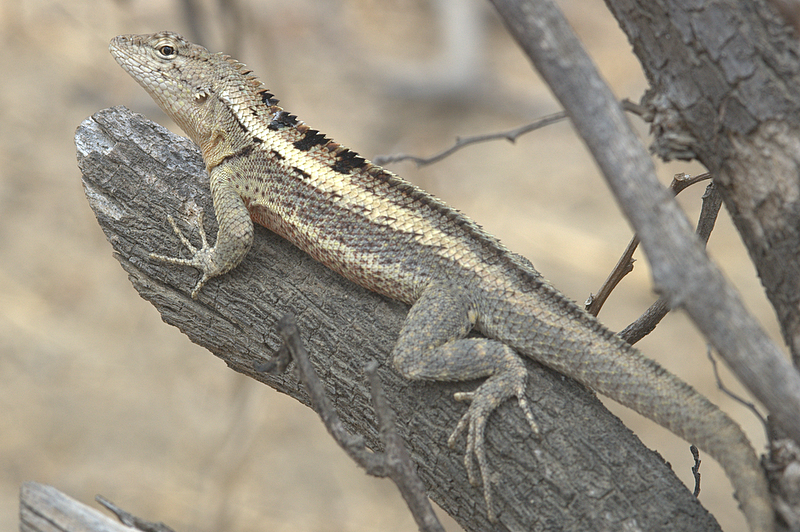Galápagos Lava Lizards on:
[Wikipedia]
[Google]
[Amazon]
''Microlophus'' is a
"Island Biogeography of Galápagos Lava Lizards (Tropiduridae: ''Microlophus''): Species Diversity and Colonization of the Archipelago".
(.pdf) ''Evolution'' 63 (6): 1606–1626. (they are sometimes placed in ''

 Listed alphabetically by
Listed alphabetically by ''Microlophus''
The Reptile Database. www.reptile-database.org. (* endemic to the Galapágos Islands). *'' Microlophus albemarlensis'' – Galápagos lava lizard* *'' Microlophus arenarius'' *'' Microlophus atacamensis'' – Atacamen Pacific iguana *'' Microlophus barringtonensis'' – Santa Fe lava lizard* *'' Microlophus bivittatus'' – San Cristóbal lava lizard* *'' Microlophus delanonis'' – Española lava lizard or Hood lava lizard* *'' Microlophus duncanensis'' – Pinzón lava lizard* *'' Microlophus grayii'' – Floreana lava lizard* *'' Microlophus habelii'' – Marchena lava lizard* *'' Microlophus heterolepis'' *'' Microlophus indefatigabilis'' – Santa Cruz lava lizard * *'' Microlophus jacobii'' Santiago lava lizard * *'' Microlophus koepckeorum'' – Frost's iguana *'' Microlophus occipitalis'' – knobbed Pacific iguana *'' Microlophus pacificus'' – Pinta lava lizard or common Pacific iguana* *'' Microlophus peruvianus'' – Peru Pacific iguana *'' Microlophus quadrivittatus'' – four-banded Pacific iguana *'' Microlophus tarapacensis'' – Tarapaca Pacific iguana *'' Microlophus theresiae'' – Theresia's Pacific iguana *'' Microlophus theresioides'' – ''corredor de pica'' (in Spanish) *'' Microlophus thoracicus'' – Tschudi's Pacific iguana *'' Microlophus tigris'' – tiger Pacific iguana *'' Microlophus yanezi'' – Yanez's lava lizard ''
genus
Genus (; : genera ) is a taxonomic rank above species and below family (taxonomy), family as used in the biological classification of extant taxon, living and fossil organisms as well as Virus classification#ICTV classification, viruses. In bino ...
of tropidurid lizards native to South America. Around 20 species
A species () is often defined as the largest group of organisms in which any two individuals of the appropriate sexes or mating types can produce fertile offspring, typically by sexual reproduction. It is the basic unit of Taxonomy (biology), ...
are recognized and 10 of these are endemic
Endemism is the state of a species being found only in a single defined geographic location, such as an island, state, nation, country or other defined zone; organisms that are indigenous to a place are not endemic to it if they are also foun ...
to the Galápagos Islands
The Galápagos Islands () are an archipelago of volcanic islands in the Eastern Pacific, located around the equator, west of the mainland of South America. They form the Galápagos Province of the Republic of Ecuador, with a population of sli ...
, where they are commonly known as lava lizards Benavides, Edgar; Baum, Rebecca; Snell, Heidi M.; Snell, Howard L.; Sites, Jack W., Jr. (2009)"Island Biogeography of Galápagos Lava Lizards (Tropiduridae: ''Microlophus''): Species Diversity and Colonization of the Archipelago".
(.pdf) ''Evolution'' 63 (6): 1606–1626. (they are sometimes placed in ''
Tropidurus
''Tropidurus'' is a genus of reptiles. The genus includes many species of Neotropical ground lizards (family (biology), family Tropiduridae). ''Tropidurus'' is the type genus of the family Tropiduridae.
Geographic range and habitat
Species in ...
'' instead). The remaining, which often are called Pacific iguanas, are found in the Andes
The Andes ( ), Andes Mountains or Andean Mountain Range (; ) are the List of longest mountain chains on Earth, longest continental mountain range in the world, forming a continuous highland along the western edge of South America. The range ...
and along the Pacific coasts of Chile, Peru, and Ecuador.
The distribution of the lava lizards and their variations in shape, colour, and behaviour show the phenomenon of adaptive radiation
In evolutionary biology, adaptive radiation is a process in which organisms diversify rapidly from an ancestral species into a multitude of new forms, particularly when a change in the environment makes new resources available, alters biotic int ...
so typical of the inhabitants of this archipelago. One species occurs on all the central and western islands, which were perhaps connected during periods of lower sea levels, while one species each occurs on six other more peripheral island
An island or isle is a piece of land, distinct from a continent, completely surrounded by water. There are continental islands, which were formed by being split from a continent by plate tectonics, and oceanic islands, which have never been ...
s. All have most likely evolved from a single ancestral species. However, as usual for the Tropiduridae, they can change their colour individually to some extent, and members of the same species occurring in different habitats also show colour differences. Thus, animals living mainly on dark lava
Lava is molten or partially molten rock (magma) that has been expelled from the interior of a terrestrial planet (such as Earth) or a Natural satellite, moon onto its surface. Lava may be erupted at a volcano or through a Fissure vent, fractu ...
are darker than ones that live in lighter, sandy environments.
Species

 Listed alphabetically by
Listed alphabetically by specific name Specific name may refer to:
* in Database management systems, a system-assigned name that is unique within a particular database
In taxonomy, either of these two meanings, each with its own set of rules:
* Specific name (botany), the two-part (bino ...
.The Reptile Database. www.reptile-database.org. (* endemic to the Galapágos Islands). *'' Microlophus albemarlensis'' – Galápagos lava lizard* *'' Microlophus arenarius'' *'' Microlophus atacamensis'' – Atacamen Pacific iguana *'' Microlophus barringtonensis'' – Santa Fe lava lizard* *'' Microlophus bivittatus'' – San Cristóbal lava lizard* *'' Microlophus delanonis'' – Española lava lizard or Hood lava lizard* *'' Microlophus duncanensis'' – Pinzón lava lizard* *'' Microlophus grayii'' – Floreana lava lizard* *'' Microlophus habelii'' – Marchena lava lizard* *'' Microlophus heterolepis'' *'' Microlophus indefatigabilis'' – Santa Cruz lava lizard * *'' Microlophus jacobii'' Santiago lava lizard * *'' Microlophus koepckeorum'' – Frost's iguana *'' Microlophus occipitalis'' – knobbed Pacific iguana *'' Microlophus pacificus'' – Pinta lava lizard or common Pacific iguana* *'' Microlophus peruvianus'' – Peru Pacific iguana *'' Microlophus quadrivittatus'' – four-banded Pacific iguana *'' Microlophus tarapacensis'' – Tarapaca Pacific iguana *'' Microlophus theresiae'' – Theresia's Pacific iguana *'' Microlophus theresioides'' – ''corredor de pica'' (in Spanish) *'' Microlophus thoracicus'' – Tschudi's Pacific iguana *'' Microlophus tigris'' – tiger Pacific iguana *'' Microlophus yanezi'' – Yanez's lava lizard ''
Nota bene
( ; plural: ) is the Latin language, Latin phrase meaning ''note well''.
In manuscripts, ''nota bene'' is abbreviated in upper-case as NB and N.B., and in lower-case as n.b. and nb; the editorial usages of ''nota bene'' and ''notate bene'' fi ...
'': A binomial authority in parentheses indicates that the species was originally described in a genus other than ''Microlophus''.
References
Further reading
* Duméril AMC, Bibron G (1837). ''Erpétologie générale ou Histoire naturelle complète des Reptiles. Tome quatrième'' olume 4 Paris: Roret. ii + 571 pp. (''Microlophus'', new genus, pp. 334–335). (in French). Lizards of South America Lizard genera Taxa named by Gabriel Bibron Taxa named by André Marie Constant Duméril {{Tropiduridae-stub